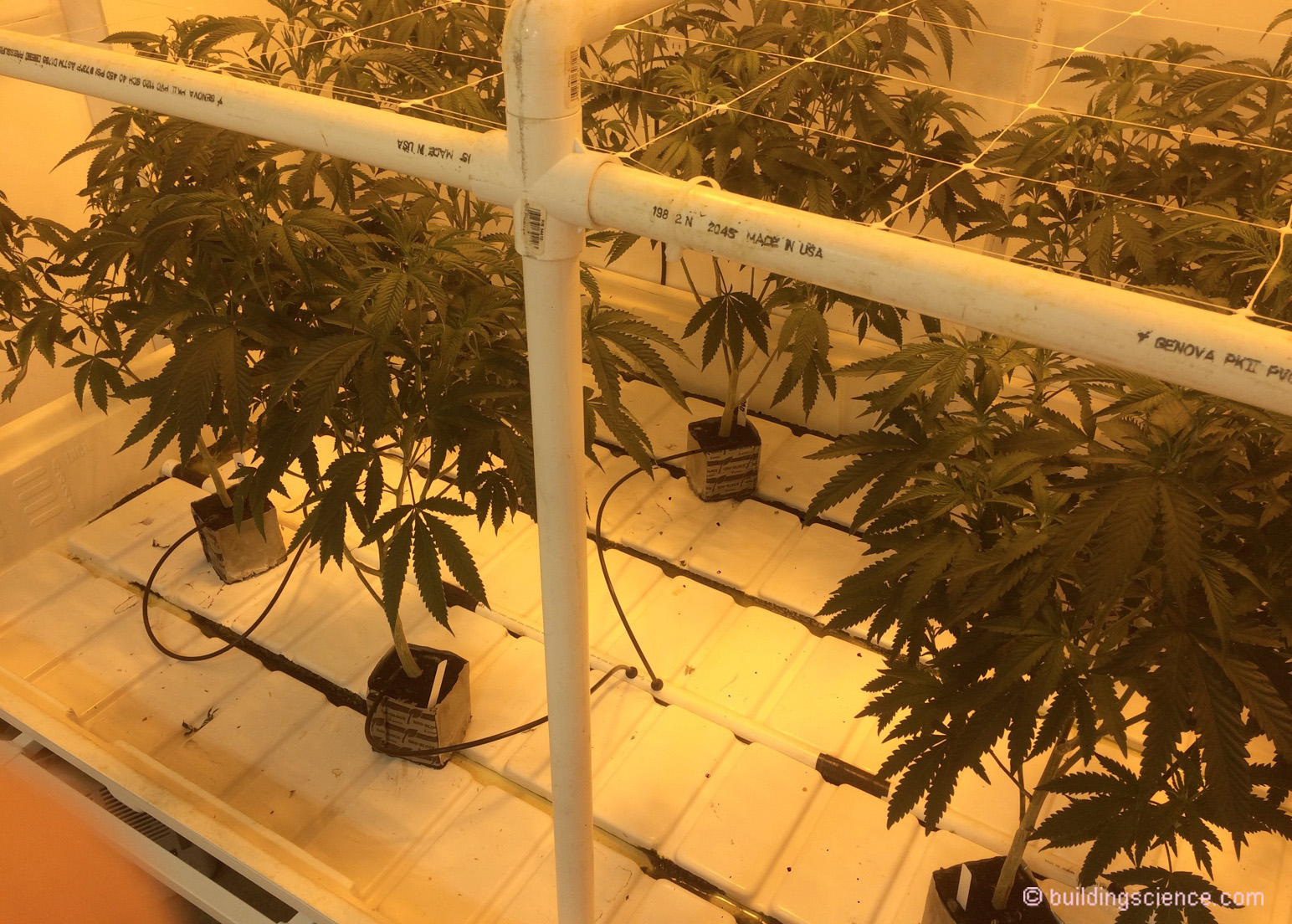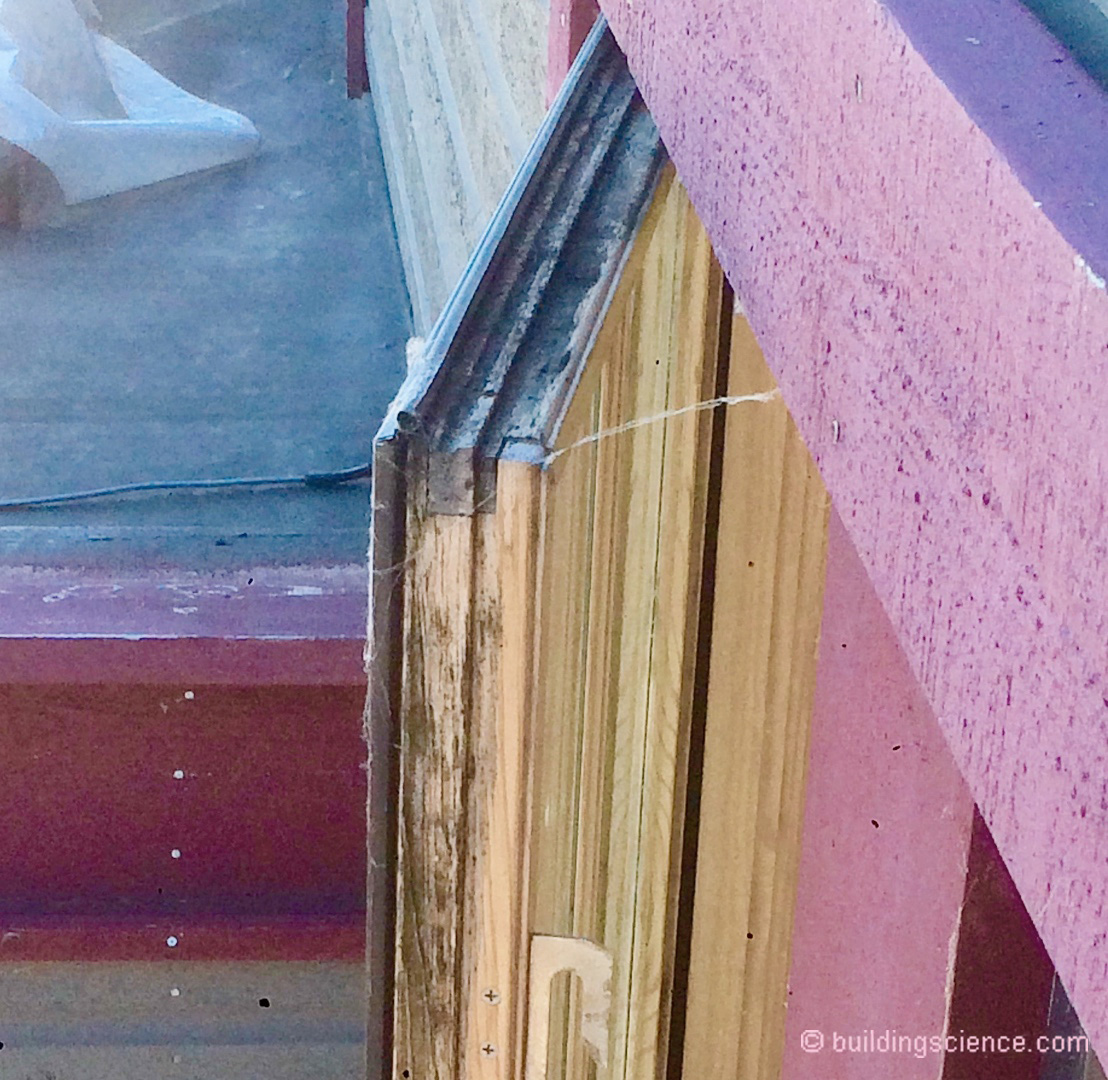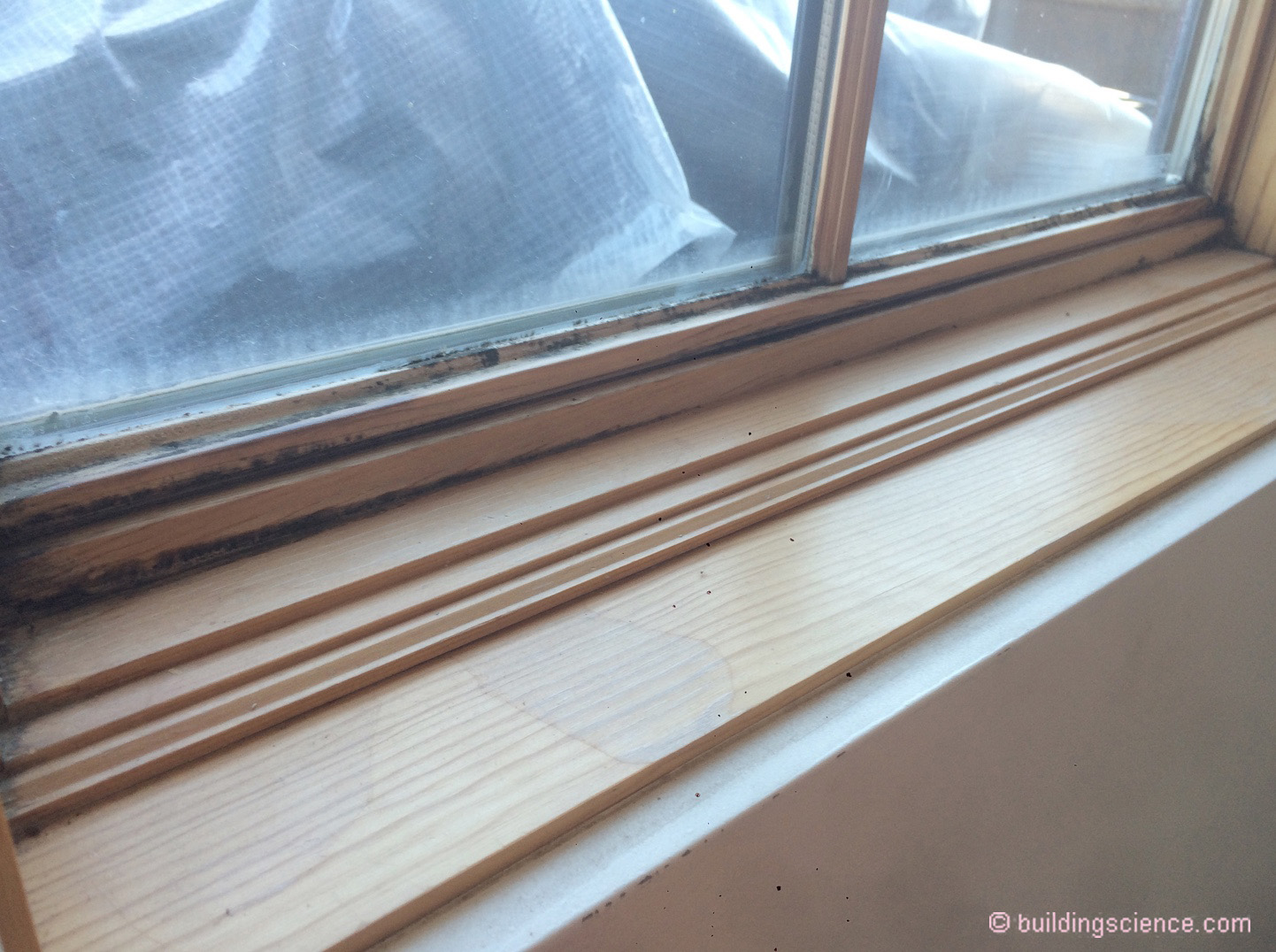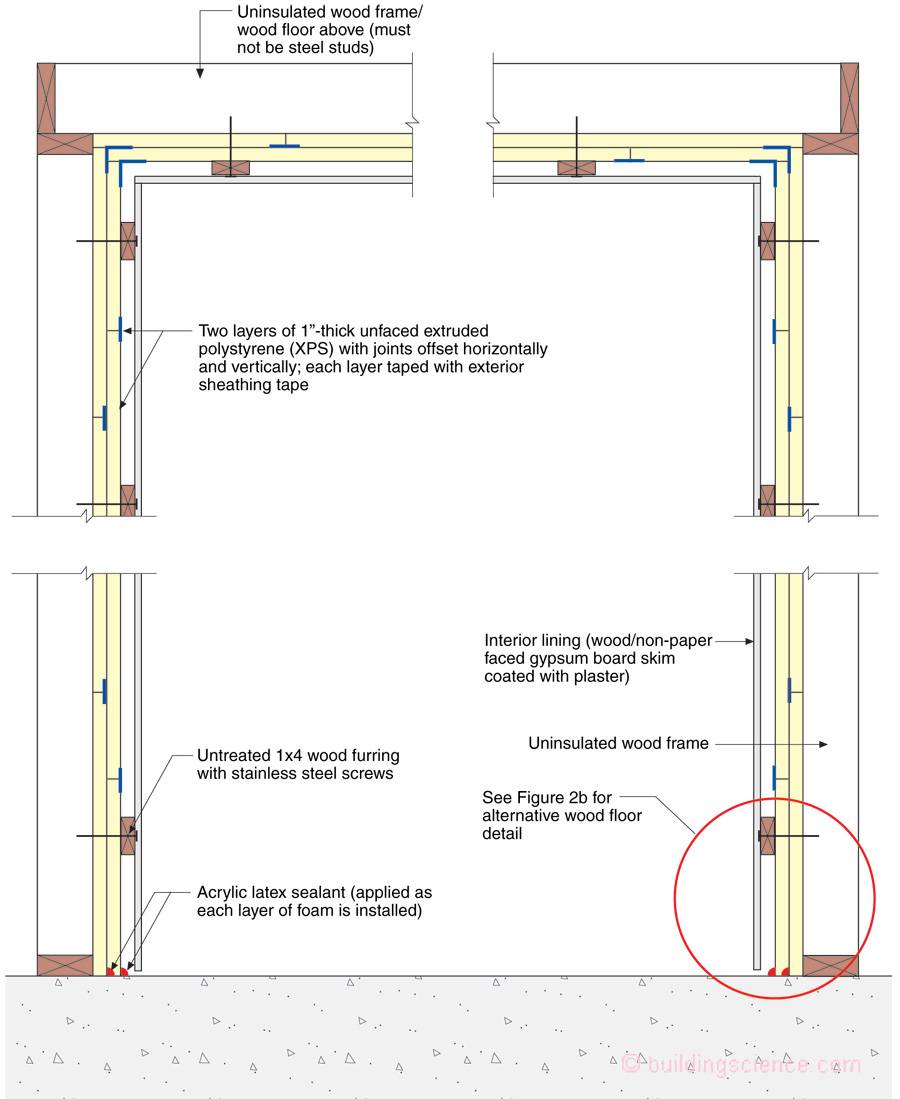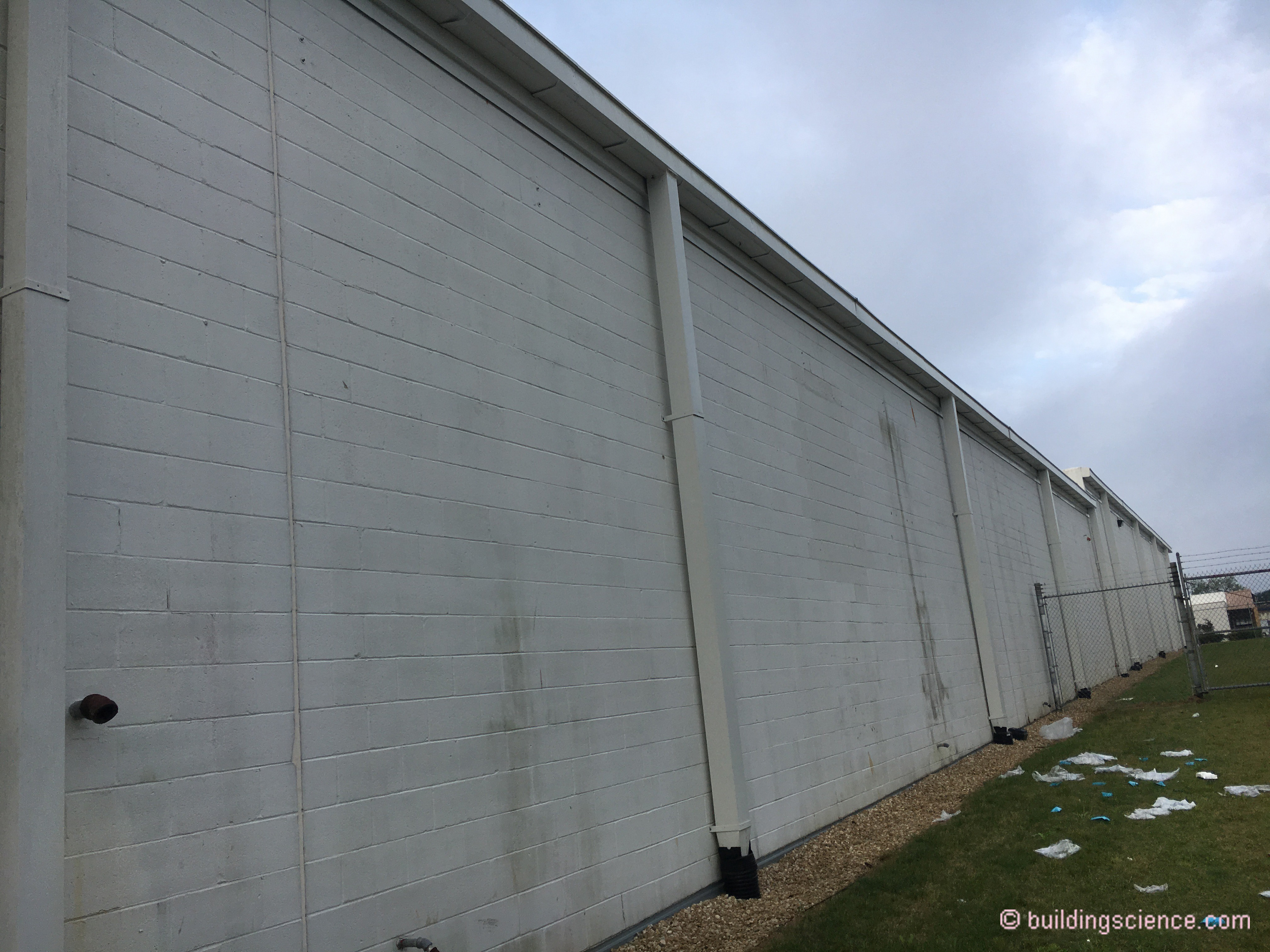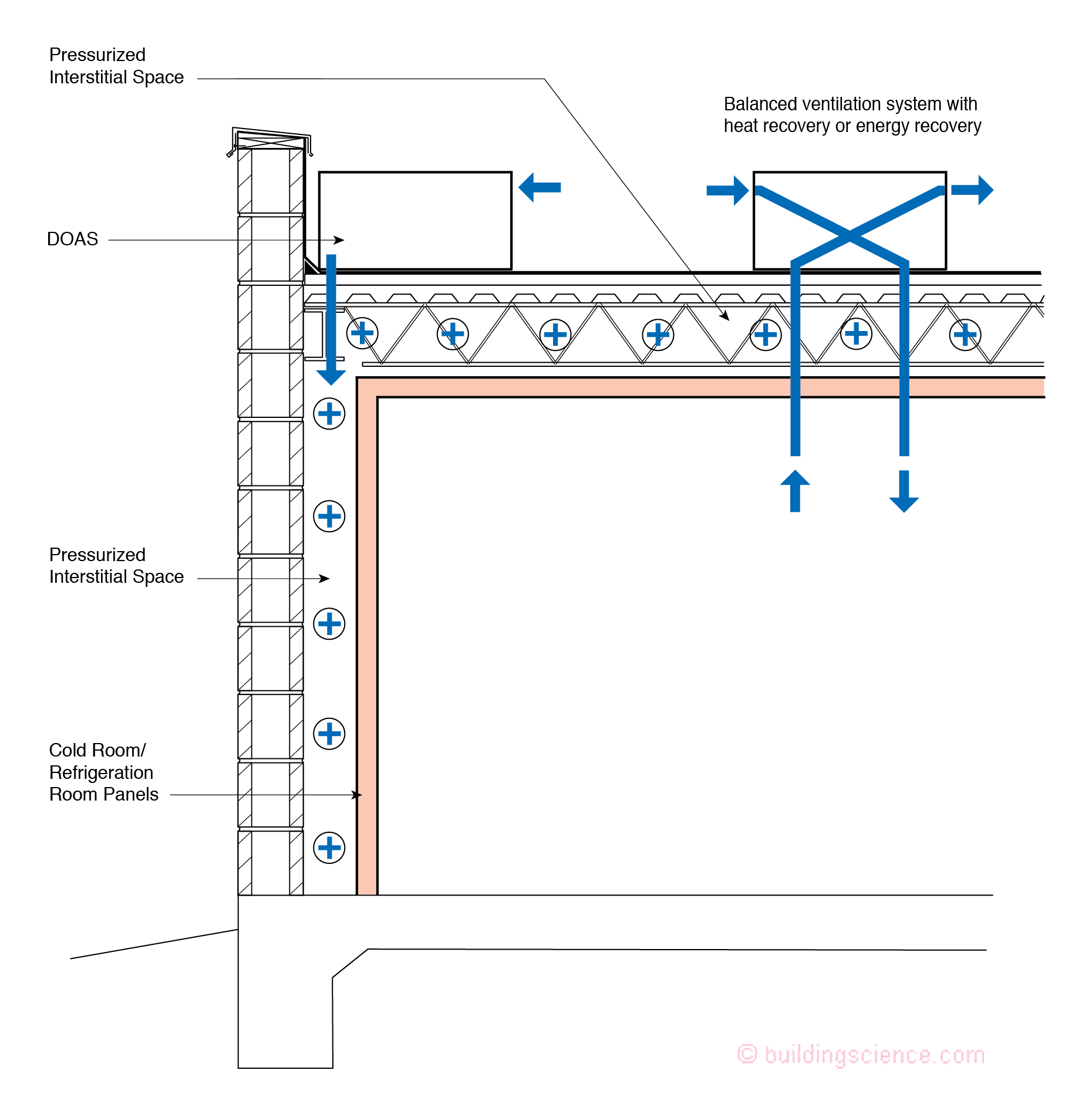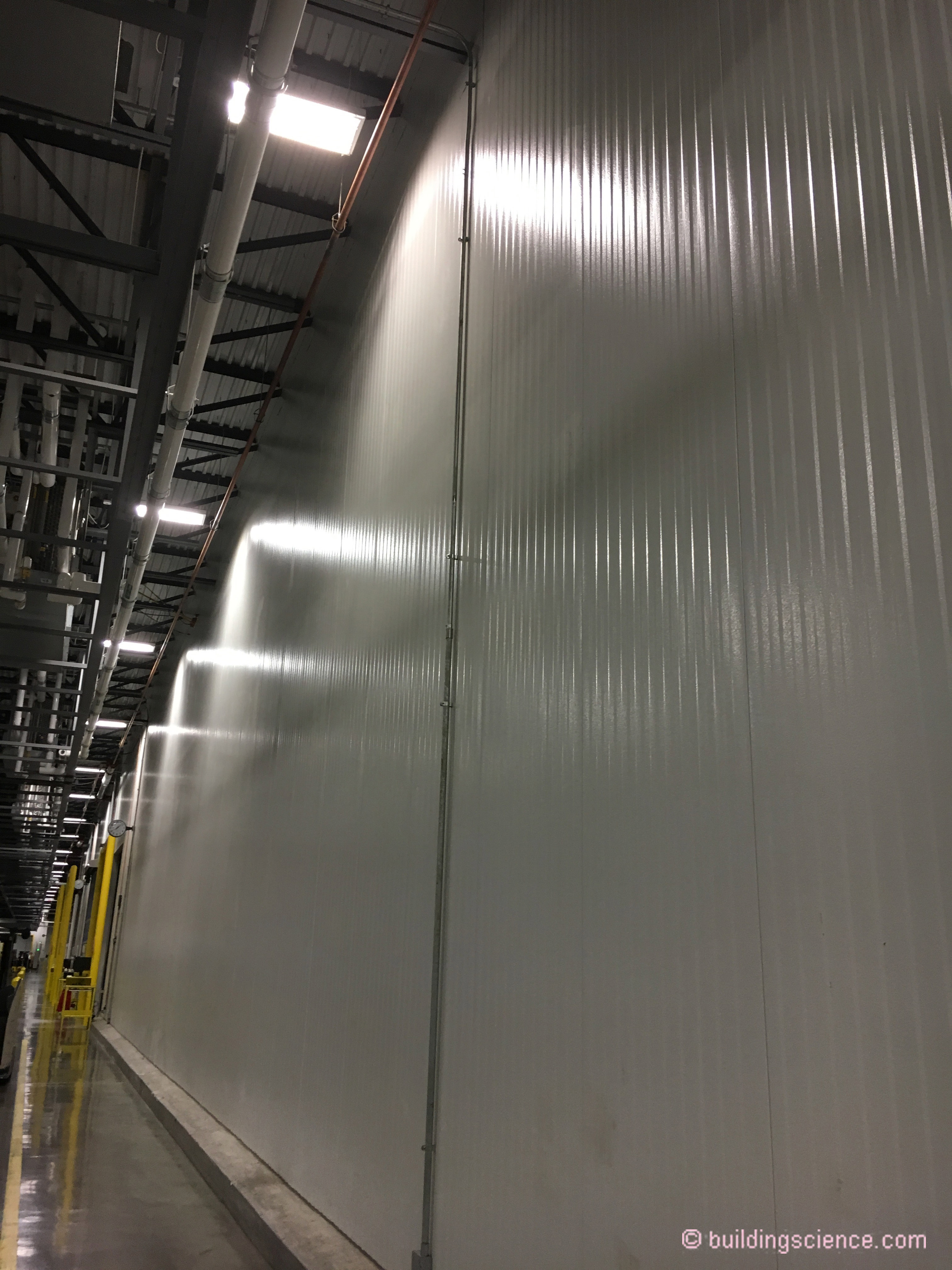Weed[2]…..we call it “weed” because it pretty much grows anywhere “in the wild”…outside. Did I mention “outside” in pretty much uncontrolled conditions. Wow, have things changed. Folks are moving growing marijuana indoors and sometimes things are ending up badly. Back in the day, when it was illegal, grow rooms were isolated, not common and lead to bemusement from us engineers dealing with the resulting damage caused by the grow operations. It was hard to hide the smell and the high utility bills. Law enforcement would find them by looking at utility bills and infra-red neighborhood flyovers looking for the unique thermal signatures of indoor marijuana farming. Accountants teamed with Tom Clancy.
Now, in a few states and in the Great White North, it is becoming legal to grow the stuff. In some places it is becoming a huge business…billions of dollars. We have residential scale indoor growing…in a “house” and we have industrial scale operations indoor growing in converted warehouses. Both are leading to problems. And some of us are being asked to solve the problems. Apparently “prohibition”[3] is over. We have both “home brew” and “commercialization”. Both have similar issues....
Today there is a difference between making your own wine and beer in your basement or garage and making wine and beer in a winery and brewery. There is a big difference between residential marijuana cultivation and a commercial grow operation. On the residential side hippies are meeting millennials. On the commercial side botanists now team with engineers.
It is now a big business but not a very mature business. It is like a bunch of moon-shiners suddenly given the keys to all the distillery’s in Bourbon County, Kentucky and the Highlands, Scotland….except those distillery’s were based on many decades of experience before they were built. Not so for marijuana. Lots of money but not lots of experience.
Back in the day I enjoyed dealing with designing wine cellars for custom homes. I never thought that it would morph into grow rooms for entrepreneurs. In an even more unexpected twist I went from designing natatoriums and museums to designing grow operations.
It gets even more interesting…the power consumption for grow rooms and grow operations is staggering. I am guessing[4] that a typical grow operation uses 10 to 20 times more energy per square foot than the typical office building. In Denver, the “grow capital of Colorado”, almost 5 percent of Denver’s electricity is devoted to marijuana according to Denver’s Department of Public Health and Environment[5]. Even more unbelievable commercial marijuana grow operations consume more electricity than all of Denver’s commercial and industrial electrical use combined[6]. On the residential side, in Portland, Oregon, Pacific Power attributes seven power outages during 2015 were due to indoor grow operations overloading local circuits. Pacific Power urges “would-be home growers to consult with the utility before starting up their marijuana operations…[7]”
The industry…and civilians can learn a lot from the experiences of wineries and wine makers and distilleries and distillers. The really, really good wines are made with a great deal of skill by folks who don’t share all of their secrets. Same for bourbon and scotch and vodka and gin and tequila. Many of the details are closely held secrets. Manipulating conditions in a precise and controlled way is a big deal. You want to have a fun but unrevealing conversation talk to the folks at the Buffalo Trace Distillery about the temperature and relative humidity conditions they store their beloved Pappy Van Winkle at for how long and are the conditions constant or variable? Then go and try to have the same conversation with the folks at Maker’s Mark Distillery in Loretto, KY. Then go to Bordeaux, France and Napa, CA with a side trip to Tuscany, Italy and have the same discussions but this time about the conditions during the actual wine making process. Yup. Same story. Generalities for answers so that you go away. But the process in all these cases is amazingly precise and controlled. It didn’t get that way by accident. And it takes skilled engineering and botany and tradition to make the good stuff. Marijuana is going to go in that direction…and it has already started.
So let’s look at the trend….we are going from growing weed outdoors…then to greenhouses…then to indoors? Why? Ah, indoors we can have precise control over the environment the plants see. We need to control water, temperature, humidity, carbon dioxide levels, light and nutrients. See bourbon, scotch and beer discussion previously[8]. And we need to do this precisely to get “the good stuff”. Medical marijuana is different than recreational marijuana. Oils are different than pills. The active ingredients are different. Marijuana tetrahydrocannabinol (THC) potency has dramatically increased in the last half century…it is not 1960’s weed…not your grandfathers pot…and it is no accident. You get the idea.
The general boundary conditions for indoor marijuana cultivation are reasonably well understood. We want temperatures in the 70 degree F to 75 degree F range during the “light” period and no cooler than 60 degrees F during the “dark” period. You do not want temperatures to go above 80 degrees F or the plant will not flower – and that could be a several hundred thousand dollar hit to a commercial operation.
Relative humidity should be between 50 percent and 60 percent. It is important to not get too high or mold growth can destroy the entire crop. Too low and we stress the crop and destroy it. Ideally we want to water the roots but leave the foliage dry or leave the aerial parts of the plant dry. let the plant dry into the air. Watering operations are a big deal. Liquid water allows nutrients to enter the plant root system. Roots need to be damp, but not wet. Keeping the roots wet or saturated can lead to disease. But the plants also need to cool themselves via a process called transpiration releasing moisture. So the air needs to be dry enough to allow the plants to transpire. In addition to helping with cooling, the loss of water through transpiration drives the uptake of water and nutrients into the roots and up through the plant. The plants are basically cycling moisture. Pulling it inwards in the liquid form and releasing it outwards in the vapor form. It is the vapor form that is of the most concern. Did I mention mold yet? Dehumidification to control moisture and dilution ventilation to control moisture is a really, really big deal if we are seriously in the growing business.
Residentially, folks are typically allowed 12 plants per household (Photograph 1). Watering them, keeping the humidity up in the winter….keeping the humidity down in the summer is a challenge. For a house this is a big moisture load. Add the lighting needed. We have a big thermal load. You can’t do that in a normal house. You can’t do that in a typical room in the house. It is like putting an indoor swimming pool in your house or a hot tub that is always filled with water and always running in a room in your house. It kills your windows (Photograph 2). Did I mention the part about windows (Photograph 3)? It also kills your walls and roof. If you want to do this inside your house build a special room in your house. Think wine cellar for pot plants. Wine cellars require special conditions…55 degrees F and 70 percent relative humidity. We know how to do these…we were here before (“BSI-010: Wine Cellars”, January 2009). Construct them exactly the same way (Figure 1). But now you have to add a dehumidifier and an air conditioner. You will have to inject carbon dioxide periodically. And if it was my grow room I would run it under a slight negative air pressure (about 5 Pascals…just a guess on my part) to control odors and to make sure moisture from the inside of the grow room does not trash the rest of my house. Exhaust the grow room air directly to the outside through a carbon filter so you are not smelling up the neighborhood. A 20 cfm fan with a very flat fan curve should do the trick. That low? Yup, because this room is going to be ultra-tight. Don’t have any of the six surfaces of this “cube” touch any part of your exterior walls or roof or attic….
Photograph 1:Household Plants –Just like any other plants…hah!
Photograph 2: Residential Window –Don’t have a window in your grow room.
Photograph 3: Residential Window –Did I already mention don’t have a window in your grow room.
Figure 1: Residential Grow Room –Just like a wine room but now you have to add a dehumidifier and an air conditioner. You will have to inject carbon dioxide periodically. And if it was my grow room I would run it under a slight negative air pressure - about 5 Pascals - to control odors and to make sure moisture from the inside of the grow room does not trash the rest of my house. Exhaust the grow room air directly to the outside through a carbon filter so you are not smelling up the neighborhood. A 20 cfm fan with a very flat fan curve should do the trick. That low? Yup, because this room is going to be ultra-tight. Don’t have any of the six surfaces of this “cube” touch any part of your exterior walls or roof or attic….
Commercially, taking industrial buildings and warehouses and converting them to grow operations (Photograph 4 and Photograph 5) is not easy and not without its problems. You really think you can do this in an uninsulated masonry or metal building?
Photograph 4: Commercial Grow Operation –Humidified, pressurized, temperature controlled, carbon dioxide injected, lighted, circulated….easy right?
Photograph 5: Grow Op Warehouse - Taking industrial buildings and warehouses and converting them to grow operations is not easy and not without its problems. You really think you can do this in an uninsulated masonry of metal building?
Let’s go back to the optimum temperature and relative humidity conditions for growing weed. Does this not sound just like a museum or art gallery? Typical museum specifications are 75 degrees F. plus or minus 5 degrees and 50 percent RH plus or minus 5 percent. Except with a museum we want things to be constant. Not so for the marijuana business. Closely held trade secrets now come to play. Differing conditions between light and dark…differing conditions between growth cycles and flowering cycles. Grow operations want things to react quickly and precisely. Can’t do that commercially on a large scale in a leaky building enclosure with little or no insulation and lots of thermal mass. More about that later. But the point is made…you are going to have to have insanely big mechanical systems that are going to try to regulate differing temperature and humidity goals that may be shifting on an hourly basis…unless you are smart with the building enclosure.
Now on to carbon dioxide levels. Plants need lots of carbon dioxide. About 1200 ppm on average. It is expensive to provide. Folks try to take the cheap way out and burn something to get it. As insane as that sounds folks are doing it. Propane construction heaters that generate lots of bad stuff along with the desired carbon dioxide. Some of the stuff can kill you…but the worst of the stuff is too much moisture that you now have to get rid of…remember the mold discussion...
The smart play…in my humble opinion is to have an airtight grow enclosure and add pure industrial carbon dioxide directly into the air and couple it with little or no air change. The plants don’t need the air change…only the humans working in the space do. In a 1,000 ft2grow room you typically only need 2 people intermittently to work the space. That works out to 20 to 40 cfm depending on who makes the argument. That is nothing. Provide a balanced ventilation system and couple it with an ultra-tight space and you don’t need to inject much carbon dioxide. And you only need to ventilate when there are people in the space.
Note that air change is different than the mixing and distribution of air. Without air circulation you can get high humidity at the underside of the leaf surface where transpiration occurs. The soil surface can also get a high humidity without circulation. Both of these situations can lead to fungal or bacterial issues. And let’s not forget the injected carbon dioxide that will need mixing and distribution. What are the ideal air velocities? Ah, that is a Pappy Van Winkle or Maker’s Mark discussion…
The ventilation piece is a big deal. We need to have filtration….and good filtration…MERV 13 at minimum. Can’t bring mold spores into the space from the outside…or worse bring in male pollen or loose the virgin bud. Ideally you want to pressurize the space to keep the bad stuff from coming in. The pressurization of course comes with its own set of problems. Humidified pressurized spaces in cold climates or during cold months in mixed climates tends to destroy buildings. Think museums, art galleries, hospitals, natatoriums. Get the picture?
It is impossible to pressurize an entire building all of the time on all elevations in any event. I have a better idea. Build a building within a building and pressurize the space between the two. The pressurization would be done with highly filtered air that is preconditioned. Think direct outdoor air supply (DOAS) supplying filtered dry outside air into the cavity space between the inner and outer buildings. The cavity airspace would exfiltrate through the outer building and infiltrate through the inner building. Solves the winter time exfiltration problem of moist air a typical building would experience. Solves the infiltration of mold spores and male pollen into the inner building – the “grow space” as the infiltrating air would be filtered…all of the infiltrating air would be filtered (Figure 2).
The inner building would be done with typical commercially available cold room and refrigeration room panels (Photograph 6). Instead of a cold room we are constructing a grow room. These panels are highly insulated and airtight. All you need to do is leave an 18-inch gap between the interior panel assembly and the exterior wall. Why 18 inches? That is the typical space necessary for a person to fit inside. Huh? Trust me. At some time for some reason you are going to want to get into that space. To remove a dead animal. To fix something. Who knows? You are going to need to provide an access opening.
Figure 2: Commercial Grow Operation Building –Take an existing warehouse and construct a building within a building using typical commercially available cold room and refrigeration room panels. Pressurize the interstitial space. The pressurization would be done with highly filtered air that is preconditioned. Think direct outdoor air supply (DOAS) supplying filtered dry outside air into the cavity space between the inner and outer buildings. The cavity airspace would exfiltrate through the outer building and infiltrate through the inner building. Solves the winter time exfiltration problem of moist air a typical building would experience. Solves the infiltration of mold spores and male pollen into the inner building – the “grow space” as the infiltrating air would be filtered…all of the infiltrating air would be filtered.
Photograph 6: Cold Room/Refrigeration Room Panels - Instead of a cold room we are constructing a grow room. These panels are highly insulated and airtight.
What should the pressure difference be? About 10 Pascals. Where did that come from? Works for hospital operating theaters…will work for marijuana plants.
The other 800 lb gorilla to deal with is odor control. Have you driven through Denver or Portland or Seattle lately? Smells pretty bad. You need to send odorless air out of a grow room you need a scrubber. If your grow room is at a negative pressure relative to its surroundings (recall the pressurization of the space between the grow room and the exterior) the only grow room air leaving is the air leaving via the balanced ventilation system and that flow rate is really, really low. Carbon filtration on the outgoing air. Easy. Now you don’t irritate the neighbors.
Now for the lighting. It goes without saying that LED lighting is the way to go…otherwise the heat buildup is huge and the cooling load is huge likewise. Depending on the secret method employed by the grow guru the “light” period might be 20 hours to 20 hours per day depending on the cycle the plants are in. And then it needs to drop to 12 hours per day. Lots of experimentation going on.
Now think of the heat load from the lights. Big, variable, not constant. Needs to be controlled precisely. Oh, by the way, and I know you all know this, the lights affect the temperatures and that affects the relative humidity. Dealing with museums and art galleries and hospitals is easy compared to the controls and systems necessary to respond quickly and precisely to temperature and humidity changes driven by highly variable loads. Have I mentioned climate yet? Try doing this in Portland, ME and Portland, OR. The same right? Hah!
What about system reliability? Back-up power? Think nursing home and hospital logic. Frail people…frail plants[9].
So where are we so far? Highly insulated structures that are airtight with highly efficient lighting systems and highly efficient ventilation and filtration systems coupled with high thermal resistance. To this we add precise temperature control and precise relative humidity control and precise control of carbon dioxide levels. Finally, we add the watering and nutrient control. The energy implications are enormous. The reliability of the grid, peak load issues are a big deal. Then we get into water usage, waste streams and recycling. This has ASHRAE all over it. I think we need a chapter in ASHRAE, Applications….and a committee[10]….and ASHRAE might want to reach out to the industry. Designing these systems and enclosures is one thing. Who builds them and installs them? And then we have the equipment…might want to invest in companies that make sophisticated dehumidification systems.
Think Adolphus Busch meeting Elon Musk at a meeting chaired by the Bronfmans….
Acknowledgements
Jennifer Thorne Amann, Buildings Program Director, ACEEE.
Michael Lubliner, Washington State University Energy Program.
Bart Laemmel, B2 Building Science, Crested Butte, Colorado
*In this case “bud” is short for “a growth on a plant that develops into a leaf or flower” and a nickname for marijuana not for Budweiser…one of the best-selling beers of all time and a play on one of the greatest advertising catch phrases of all time…also from Anheuser-Busch. In 1979, kinda when I was getting this engineering thing going, Anheuser-Busch came out with a commercial developed by D’Arcy Masius Benton & Bowles…that had the catch phrase “This Bud’s for You” which remained an Anheuser-Busch marketing staple for two decades. Adolphus Busch was a German immigrant – the twenty-first of twenty-two children – yes you read that right. He emigrated to St. Louis, MO in 1857. Why St. Louis? Lots of other Germans, therefore lots of beer drinkers, fresh water and lots of caves to keep beer cool. This was before ASHRAE and refrigeration. I have to come clean now…I am of Czech ancestry and there is a trademark dispute between Budweiser Budvar, a Czech company, which holds the rights to the name Budweiser in Europe and Anheuser-Busch InBev which holds the rights to the name in North America. It is necessary to point out, for the record, that Czechs taught the Germans how to make good beer. Ceske Budejovice (“Budweis” in German) is where the original Budweiser comes from in the 13th century…beer made in Budweis. At the time both Czech and German were official languages in the Kingdom of Bohemia now in the Czech Republic. Also for the record, Pilsen, also in the Czech Republic, is where “pilsner” beer comes from. Further note that Czechs have the highest per capita beer consumption in the world. Germany? Not even close.
[2]First called “kannabis” by the ancient Greeks. Ganja is Sanksrit from the Indian strain cannabis sativa. Pot comes from the Spanish potiguaya…a wine with steeped marijuana buds. Marijuana comes from “a Mexican Spanish mixture of herbs…” go to https://herb.co/marijuana/news/cannabis-marijuana-ganja-weed-where-did-these-names-come-from
[3]The 18th Amendment to the Constitution which prohibited the manufacture, transportation and sale of intoxicating liquors was passed in 1920 and was referred to as “Prohibition”. It was subsequently repealed by the 21st Amendment to the Constitution in 1933 as it was difficult to enforce, failed to eliminate associated social problems and crime and irritated voters. Sound familiar?
[4]Mike Lubliner and Jennifer Thorne Amann had input into this guess. They were more conservative. Ponder that for a moment….Luby and Jen more conservative than me….
[5]Colorado Public Radio, February 19, 2018.
[6]Apparently weed is not green using the metrics of the “green” community. I am enjoying the moment. Is the carbon footprint of a bourbon drinker more desirable than the carbon footprint of a vaper? If I give up my SUV will the carbon credit offset my smoking? Are Prius drivers who toke more or less environmentally responsible than a Porsche driver who drinks single malt? The last question is important to me.
[7]https://www.utilitydive.com/news/marijuana-grow-houses-trigger-7-summer-outages-for-pacific-power/408741/
[8]I just had to get a John Lee Hooker reference in somewhere…one bourbon, one scotch and one beer….
[9]I find it frustrating that I get more traction talking about systems redundancy and reliability for grow houses than extended stay facilities. How messed up are things when some folks get more worked up about plants than people…
[10]I absolutely don’t want to be on this committee and I certainly don’t want to write the chapter…but I know a bunch of folks that would do a great job.

